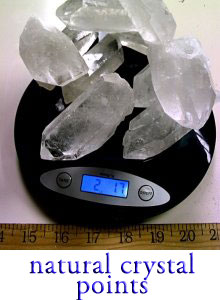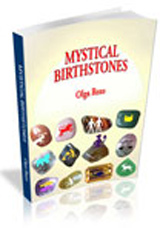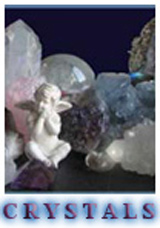
| |
Sunstone gemstone  | |  Emerald stone Emerald stone  | |  Rutile quartz Rutile quartz  | |  Topaz crystal Topaz crystal  | |  Hematite stones Hematite stones  | |  Sapphire stones Sapphire stones  | |  Fluorite crystal Fluorite crystal  | |  Diamonds meaning Diamonds meaning  | |  Vogel crystal Vogel crystal  | |  Blue lace agate Blue lace agate  | |  Jade gem stone Jade gem stone  | |  Orthoclase Orthoclase  | |  Lepidolite properties Lepidolite properties  | |  Sattuckite properties Sattuckite properties  | |  Citrine Citrine  | |  Aquamarine Aquamarine  | |  Rose quartz Rose quartz  | |  Amethyst Amethyst  | |  Fire opal Fire opal  | |  Obsidian Obsidian
 | |  Prehnite Prehnite  | |  Opal Opal  | |  Kunzite Kunzite
 | |  Thulite Thulite  | |  Tourmaline Tourmaline  | |  Amazonite Amazonite  | |  Petalite Petalite  | |  Tektite | Tektite |  Pietersite | Pietersite |  Ruby | Ruby |  | |  Chrysoprase | Chrysoprase | 
|
Types of Silicate Minerals — Tectosilicates
Silicates are probably the most important class of minerals on our planet. We can classify them in several ways, and one of the most important is related to the spatial formation of bonds between the silicon and oxygen atoms. In this scheme, there are several groups of Silicates whose main distinction is based on the way the structural units — SiO4 tetrahedra — are linked to one another. Here, we will examine the Tectosilicates.
Tectosilicates
Tectosilicates represent the class of silica-based minerals where the SiO4 groups build complex 3D networks, similar to the network shown in the image below.

Notable representative of the group of Tectosilicates is the vast Quartz family. Quartz is the most abundant mineral in the Earth's crust. The many Quartz varieties can be further divided into two groups based on the size of the individual crystals grains — crystallites. So, we have Macrocrystalline and Microcrystalline Quartz.
Macrocrystalline Quartz
Here we put all Quartz minerals that build macroscopic crystallites visible with the naked eye. Here are some examples:
Amethyst

Citrine

Rock crystal

 Smoky quartz
Smoky quartz
Microcrystalline Quartz
By contrast to the Macrocrystalline Quartz, in the family of Microcrystalline Quartz we enumerate all Quartz varieties that don't build macroscopic crystals. Their crystals are rather small and cannot be seen in normal circumstances. One needs strong magnification in order to observe the individual crystallites. Microcrystalline Quartz is also sometimes referred to as Crypto-crystalline Quartz. This group can be divided into two subgroups: Grainy Microcrystalline Variety and Fibrous. Microcrystalline Variety
Grainy Microcrystalline Quartz
The Grainy Microcrystalline types of Quartz include, among the others, the following varieties:
Flint

Jasper

Heliotrope

Aventurine

Fibrous Microcrystalline Quartz
As we have seen, the Microcrystalline types of Quartz comprises both the fibrous and grainy varieties. In fact, these names are somewhat misleading, because both varieties contain tiny crystal grains. But in the latter case, the grains are distributed in such a way that there appears to be a fibrous structure when observed under microscope. Here we have the following minerals:
Chalcedony

Agate

Chrysoprase

Onyx

Carnelian

Prasem

Feldspars
Like Quartz, Feldspars belong to the Tectosilicate family. In addition to oxygen, O, and silicon, Si, they contain elements such as aluminum, Al, calcium, Ca, potassium, K, and sodium, Na. A Feldspar variety that contains sodium is also referred to as Albite.
There are two subdivisions in the Feldspar family. One is Plagioclase feldspar and the other Orthoclase feldspar. They are similar, and their main difference is in terms of composition: Plagioclase contains calcium and sodium while Orthoclase potassium.
Plagioclase feldspar
Labradorite

Sunstone

Orthoclase feldspar
Amazonite

Orthoclase

Moonstone

Feldspathoids
Feldspathoids are also a member of the Tectosilicate family of minerals. The are similar to the Feldspars, but have somewhat different crystal structure and less silica content in their composition. Here we have, for example, Sodalite and Lapis Lazuli.
Sodalite (sodium, aluminum)

Lapis lazuli (sodium, calcium, aluminum, + pyrite)

Zeolites
Last, but not least, Zeolites are a huge family of minerals from the Tectosilicate group.
Zeolite

In this article we have presented a brief overview of the most important members of the Tectosilicate class of minerals. In the forthcoming posts, we will examine some of the other groups, like the Sorosilicates, Cyclosilicates, Inosilicates, and Phyllosilicates.




























